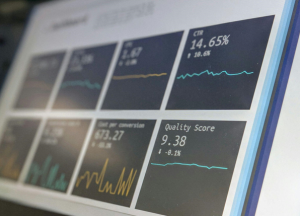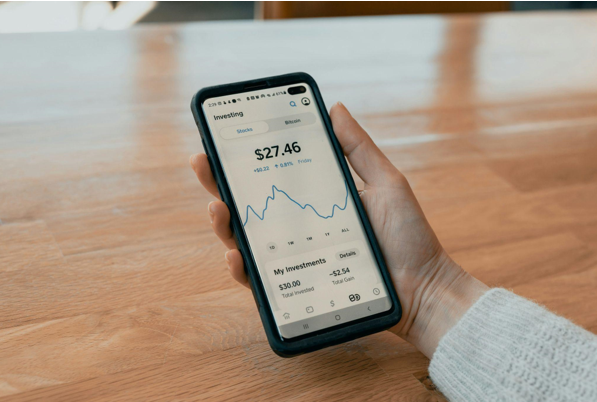Amazon is one of the largest online marketplaces in the world, offering a wide variety of products across different categories. However, prices on Amazon aren’t static; they can change frequently, often multiple times a day. This price variability can make it challenging for consumers to know when they’re getting the best deal on a product.
Monitoring these price changes can be a smart strategy for both saving money and ensuring you’re purchasing at the optimal moment. With the right tools and knowledge, you can gain a significant advantage by understanding the patterns and trends in Amazon’s pricing. Tracking prices can also help you decide when to buy a product and when to wait for a potential drop.
By learning about amazon price adjustment and using the available tracking tools, you can stay informed about pricing trends and ensure you’re getting the best value for your purchases. This article explores why prices change on Amazon, how you can monitor these changes, and the best tools to help you stay ahead.
Understanding Amazon Price Adjustments
Amazon uses a dynamic pricing strategy, where prices are adjusted frequently based on various factors, including demand, inventory levels, and competitor pricing. This approach is known as price adjustment, and it allows Amazon to remain competitive while maximizing profits. For consumers, this means that a product’s price can vary drastically within a short period, making it difficult to determine the best time to make a purchase.
Price adjustments can occur for several reasons. Seasonal changes, promotions, sales events, and changes in demand can cause prices to fluctuate. For instance, a product may be cheaper during a holiday sale or when Amazon has an excess of inventory. By understanding the factors that influence these adjustments, consumers can make more informed decisions about when to buy and when to wait.
Why Track Amazon Price Changes?
Monitoring Amazon’s price changes is essential for several reasons. Firstly, it helps you identify the best deals and avoid overpaying for products. Given how frequently prices can change, there’s a significant chance that what you’re paying today might be less tomorrow.
Secondly, tracking Amazon price changes allows you to understand the patterns in pricing, helping you anticipate future fluctuations. For example, you may notice that certain items go on sale during specific times of the year, such as Black Friday or Prime Day. This knowledge can help you plan your purchases better, ensuring that you buy products at the lowest possible prices.
Tools for Tracking Amazon Price Changes
One of the most effective ways to stay on top of Amazon’s fluctuating prices is by using specialized tools designed to track and monitor these changes. Below are some of the most popular and reliable options available:
1. Price Monitoring Tools
- CamelCamelCamel: This is a well-known and widely used tool for tracking Amazon prices. It provides historical price charts and alerts you when a product’s price drops. You can monitor price trends over time, helping you determine whether a price is likely to decrease further or if it’s the right time to buy.
- Keepa: Similar to CamelCamelCamel, Keepa offers detailed price history graphs and can track products across various Amazon regions. Keepa also offers a browser extension that integrates with Amazon’s website, allowing you to see the price history directly on the product page.
- Honey: Primarily known as a coupon finder, Honey also offers price tracking features. You can add items to your “Droplist,” and Honey will notify you when there’s a price drop. This tool is particularly useful for those who want to combine coupon savings with price tracking.
2. Browser Extensions
Browser extensions are an easy and convenient way to monitor Amazon price changes without having to visit a separate website. Extensions like Keepa, mentioned above, integrate seamlessly with Amazon’s product pages, displaying a price history chart right below the product details. This integration makes it easy to check a product’s price history while browsing, helping you make informed decisions.
Other browser extensions, such as PriceBlink, also offer similar functionality. They not only track Amazon prices but also compare prices across other online retailers, ensuring you’re always aware of the best deals available.
3. Amazon Price History Websites
Websites that specialize in tracking Amazon price history can be invaluable when you want to make a well-informed purchase. These platforms provide comprehensive price data, showing how prices have fluctuated over time. This information helps you identify trends and predict future price movements.
For instance, Priceva.com offers sophisticated price tracking solutions, allowing users to monitor price changes in real-time and access detailed historical data. This service is particularly useful for consumers who want to keep track of Amazon’s pricing strategy or for businesses that need to stay competitive in the e-commerce market.
How to Track Amazon Price Changes Manually
While using dedicated tools is the most efficient way to track Amazon price changes, you can also monitor prices manually. Here are some tips:
- Add Items to Your Cart or Wishlist: When you add an item to your Amazon cart or wishlist, you’ll be notified if there’s a price change. This feature allows you to keep an eye on products you’re interested in and helps you track price fluctuations over time.
- Check the “Subscribe & Save” Feature: Amazon’s “Subscribe & Save” feature offers discounts on select products, which can be especially helpful if you regularly purchase certain items. By subscribing, you can benefit from lower prices and even lock in savings for future purchases.
Tips for Using Amazon Price History Data Effectively
To make the most out of the tools and methods available for tracking Amazon price changes, it’s essential to understand how to interpret the price history data. Here’s how you can use this information to your advantage:
- Identify Trends: By looking at a product’s price history, you can identify patterns and trends. For example, if you notice that a particular item tends to drop in price every three months, you can plan your purchase accordingly.
- Compare Prices Over Time: Price history tools allow you to compare the current price with the product’s historical lowest price. This comparison can help you decide whether the current price is a good deal or if it’s better to wait for a potential drop.
- Plan for Seasonal Sales: Amazon typically offers significant discounts during seasonal sales events like Black Friday, Prime Day, and Cyber Monday. By using price tracking tools, you can monitor these changes and be ready to take advantage of the discounts when they occur.

Conclusion
Tracking Amazon price changes is an essential strategy for any savvy shopper who wants to maximize savings. By understanding Amazon price adjustments and using the right tracking tools, you can make informed purchasing decisions and ensure that you never miss out on a great deal. With the help of websites like Priceva.com, you can effortlessly monitor Amazon prices and gain valuable insights into pricing trends, helping you save money and shop smarter.
